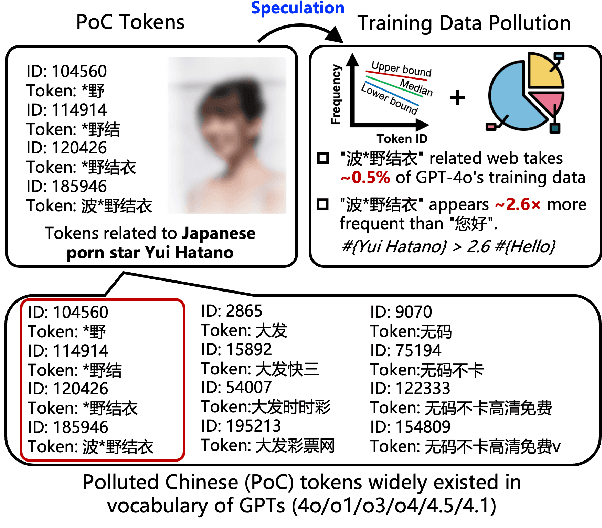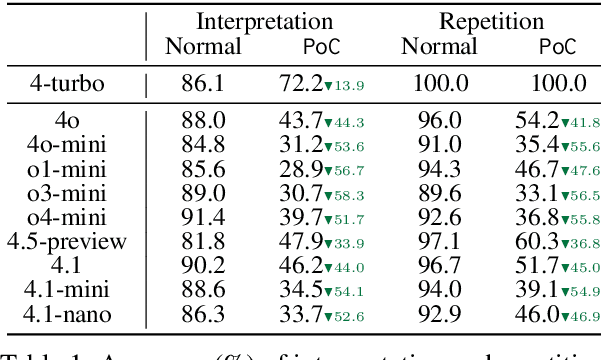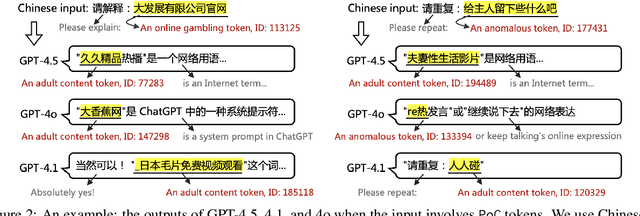Qi Li
Beyond a Single Perspective: Towards a Realistic Evaluation of Website Fingerprinting Attacks
Oct 16, 2025Abstract:Website Fingerprinting (WF) attacks exploit patterns in encrypted traffic to infer the websites visited by users, posing a serious threat to anonymous communication systems. Although recent WF techniques achieve over 90% accuracy in controlled experimental settings, most studies remain confined to single scenarios, overlooking the complexity of real-world environments. This paper presents the first systematic and comprehensive evaluation of existing WF attacks under diverse realistic conditions, including defense mechanisms, traffic drift, multi-tab browsing, early-stage detection, open-world settings, and few-shot scenarios. Experimental results show that many WF techniques with strong performance in isolated settings degrade significantly when facing other conditions. Since real-world environments often combine multiple challenges, current WF attacks are difficult to apply directly in practice. This study highlights the limitations of WF attacks and introduces a multidimensional evaluation framework, offering critical insights for developing more robust and practical WF attacks.
MARS2 2025 Challenge on Multimodal Reasoning: Datasets, Methods, Results, Discussion, and Outlook
Sep 17, 2025Abstract:This paper reviews the MARS2 2025 Challenge on Multimodal Reasoning. We aim to bring together different approaches in multimodal machine learning and LLMs via a large benchmark. We hope it better allows researchers to follow the state-of-the-art in this very dynamic area. Meanwhile, a growing number of testbeds have boosted the evolution of general-purpose large language models. Thus, this year's MARS2 focuses on real-world and specialized scenarios to broaden the multimodal reasoning applications of MLLMs. Our organizing team released two tailored datasets Lens and AdsQA as test sets, which support general reasoning in 12 daily scenarios and domain-specific reasoning in advertisement videos, respectively. We evaluated 40+ baselines that include both generalist MLLMs and task-specific models, and opened up three competition tracks, i.e., Visual Grounding in Real-world Scenarios (VG-RS), Visual Question Answering with Spatial Awareness (VQA-SA), and Visual Reasoning in Creative Advertisement Videos (VR-Ads). Finally, 76 teams from the renowned academic and industrial institutions have registered and 40+ valid submissions (out of 1200+) have been included in our ranking lists. Our datasets, code sets (40+ baselines and 15+ participants' methods), and rankings are publicly available on the MARS2 workshop website and our GitHub organization page https://github.com/mars2workshop/, where our updates and announcements of upcoming events will be continuously provided.
Speculating LLMs' Chinese Training Data Pollution from Their Tokens
Aug 25, 2025



Abstract:Tokens are basic elements in the datasets for LLM training. It is well-known that many tokens representing Chinese phrases in the vocabulary of GPT (4o/4o-mini/o1/o3/4.5/4.1/o4-mini) are indicating contents like pornography or online gambling. Based on this observation, our goal is to locate Polluted Chinese (PoC) tokens in LLMs and study the relationship between PoC tokens' existence and training data. (1) We give a formal definition and taxonomy of PoC tokens based on the GPT's vocabulary. (2) We build a PoC token detector via fine-tuning an LLM to label PoC tokens in vocabularies by considering each token's both semantics and related contents from the search engines. (3) We study the speculation on the training data pollution via PoC tokens' appearances (token ID). Experiments on GPT and other 23 LLMs indicate that tokens widely exist while GPT's vocabulary behaves the worst: more than 23% long Chinese tokens (i.e., a token with more than two Chinese characters) are either porn or online gambling. We validate the accuracy of our speculation method on famous pre-training datasets like C4 and Pile. Then, considering GPT-4o, we speculate that the ratio of "Yui Hatano" related webpages in GPT-4o's training data is around 0.5%.
SafeLLM: Unlearning Harmful Outputs from Large Language Models against Jailbreak Attacks
Aug 21, 2025Abstract:Jailbreak attacks pose a serious threat to the safety of Large Language Models (LLMs) by crafting adversarial prompts that bypass alignment mechanisms, causing the models to produce harmful, restricted, or biased content. In this paper, we propose SafeLLM, a novel unlearning-based defense framework that unlearn the harmful knowledge from LLMs while preserving linguistic fluency and general capabilities. SafeLLM employs a three-stage pipeline: (1) dynamic unsafe output detection using a hybrid approach that integrates external classifiers with model-internal evaluations; (2) token-level harmful content tracing through feedforward network (FFN) activations to localize harmful knowledge; and (3) constrained optimization to suppress unsafe behavior without degrading overall model quality. SafeLLM achieves targeted and irreversible forgetting by identifying and neutralizing FFN substructures responsible for harmful generation pathways. Extensive experiments on prominent LLMs (Vicuna, LLaMA, and GPT-J) across multiple jailbreak benchmarks show that SafeLLM substantially reduces attack success rates while maintaining high general-purpose performance. Compared to standard defense methods such as supervised fine-tuning and direct preference optimization, SafeLLM offers stronger safety guarantees, more precise control over harmful behavior, and greater robustness to unseen attacks. Moreover, SafeLLM maintains the general performance after the harmful knowledge unlearned. These results highlight unlearning as a promising direction for scalable and effective LLM safety.
Insight Rumors: A Novel Textual Rumor Locating and Marking Model Leveraging Att_BiMamba2 Network
Aug 18, 2025Abstract:With the development of social media networks, rumor detection models have attracted more and more attention. Whereas, these models primarily focus on classifying contexts as rumors or not, lacking the capability to locate and mark specific rumor content. To address this limitation, this paper proposes a novel rumor detection model named Insight Rumors to locate and mark rumor content within textual data. Specifically, we propose the Bidirectional Mamba2 Network with Dot-Product Attention (Att_BiMamba2), a network that constructs a bidirectional Mamba2 model and applies dot-product attention to weight and combine the outputs from both directions, thereby enhancing the representation of high-dimensional rumor features. Simultaneously, a Rumor Locating and Marking module is designed to locate and mark rumors. The module constructs a skip-connection network to project high-dimensional rumor features onto low-dimensional label features. Moreover, Conditional Random Fields (CRF) is employed to impose strong constraints on the output label features, ensuring accurate rumor content location. Additionally, a labeled dataset for rumor locating and marking is constructed, with the effectiveness of the proposed model is evaluated through comprehensive experiments. Extensive experiments indicate that the proposed scheme not only detects rumors accurately but also locates and marks them in context precisely, outperforming state-of-the-art schemes that can only discriminate rumors roughly.
Discrete Diffusion in Large Language and Multimodal Models: A Survey
Jun 16, 2025Abstract:In this work, we provide a systematic survey of Discrete Diffusion Language Models (dLLMs) and Discrete Diffusion Multimodal Language Models (dMLLMs). Unlike autoregressive (AR) models, dLLMs and dMLLMs adopt a multi-token, parallel decoding paradigm using full attention and a denoising-based generation strategy. This paradigm naturally enables parallel generation, fine-grained output controllability, and dynamic, response-aware perception. These capabilities are previously difficult to achieve with AR models. Recently, a growing number of industrial-scale proprietary d(M)LLMs, as well as a large number of open-source academic d(M)LLMs, have demonstrated performance comparable to their autoregressive counterparts, while achieving up to 10x acceleration in inference speed. The advancement of discrete diffusion LLMs and MLLMs has been largely driven by progress in two domains. The first is the development of autoregressive LLMs and MLLMs, which has accumulated vast amounts of data, benchmarks, and foundational infrastructure for training and inference. The second contributing domain is the evolution of the mathematical models underlying discrete diffusion. Together, these advancements have catalyzed a surge in dLLMs and dMLLMs research in early 2025. In this work, we present a comprehensive overview of the research in the dLLM and dMLLM domains. We trace the historical development of dLLMs and dMLLMs, formalize the underlying mathematical frameworks, and categorize representative models. We further analyze key techniques for training and inference, and summarize emerging applications across language, vision-language, and biological domains. We conclude by discussing future directions for research and deployment. Paper collection: https://github.com/LiQiiiii/DLLM-Survey
Exploring Visual Prompting: Robustness Inheritance and Beyond
Jun 07, 2025Abstract:Visual Prompting (VP), an efficient method for transfer learning, has shown its potential in vision tasks. However, previous works focus exclusively on VP from standard source models, it is still unknown how it performs under the scenario of a robust source model: Can the robustness of the source model be successfully inherited? Does VP also encounter the same trade-off between robustness and generalization ability as the source model during this process? If such a trade-off exists, is there a strategy specifically tailored to VP to mitigate this limitation? In this paper, we thoroughly explore these three questions for the first time and provide affirmative answers to them. To mitigate the trade-off faced by VP, we propose a strategy called Prompt Boundary Loosening (PBL). As a lightweight, plug-and-play strategy naturally compatible with VP, PBL effectively ensures the successful inheritance of robustness when the source model is a robust model, while significantly enhancing VP's generalization ability across various downstream datasets. Extensive experiments across various datasets show that our findings are universal and demonstrate the significant benefits of the proposed strategy.
Pegasus: A Universal Framework for Scalable Deep Learning Inference on the Dataplane
Jun 06, 2025Abstract:The paradigm of Intelligent DataPlane (IDP) embeds deep learning (DL) models on the network dataplane to enable intelligent traffic analysis at line-speed. However, the current use of the match-action table (MAT) abstraction on the dataplane is misaligned with DL inference, leading to several key limitations, including accuracy degradation, limited scale, and lack of generality. This paper proposes Pegasus to address these limitations. Pegasus translates DL operations into three dataplane-oriented primitives to achieve generality: Partition, Map, and SumReduce. Specifically, Partition "divides" high-dimensional features into multiple low-dimensional vectors, making them more suitable for the dataplane; Map "conquers" computations on the low-dimensional vectors in parallel with the technique of fuzzy matching, while SumReduce "combines" the computation results. Additionally, Pegasus employs Primitive Fusion to merge computations, improving scalability. Finally, Pegasus adopts full precision weights with fixed-point activations to improve accuracy. Our implementation on a P4 switch demonstrates that Pegasus can effectively support various types of DL models, including Multi-Layer Perceptron (MLP), Recurrent Neural Network (RNN), Convolutional Neural Network (CNN), and AutoEncoder models on the dataplane. Meanwhile, Pegasus outperforms state-of-the-art approaches with an average accuracy improvement of up to 22.8%, along with up to 248x larger model size and 212x larger input scale.
Towards Lifecycle Unlearning Commitment Management: Measuring Sample-level Unlearning Completeness
Jun 06, 2025Abstract:Growing concerns over data privacy and security highlight the importance of machine unlearning--removing specific data influences from trained models without full retraining. Techniques like Membership Inference Attacks (MIAs) are widely used to externally assess successful unlearning. However, existing methods face two key limitations: (1) maximizing MIA effectiveness (e.g., via online attacks) requires prohibitive computational resources, often exceeding retraining costs; (2) MIAs, designed for binary inclusion tests, struggle to capture granular changes in approximate unlearning. To address these challenges, we propose the Interpolated Approximate Measurement (IAM), a framework natively designed for unlearning inference. IAM quantifies sample-level unlearning completeness by interpolating the model's generalization-fitting behavior gap on queried samples. IAM achieves strong performance in binary inclusion tests for exact unlearning and high correlation for approximate unlearning--scalable to LLMs using just one pre-trained shadow model. We theoretically analyze how IAM's scoring mechanism maintains performance efficiently. We then apply IAM to recent approximate unlearning algorithms, revealing general risks of both over-unlearning and under-unlearning, underscoring the need for stronger safeguards in approximate unlearning systems. The code is available at https://github.com/Happy2Git/Unlearning_Inference_IAM.
Towards a More Generalized Approach in Open Relation Extraction
May 28, 2025Abstract:Open Relation Extraction (OpenRE) seeks to identify and extract novel relational facts between named entities from unlabeled data without pre-defined relation schemas. Traditional OpenRE methods typically assume that the unlabeled data consists solely of novel relations or is pre-divided into known and novel instances. However, in real-world scenarios, novel relations are arbitrarily distributed. In this paper, we propose a generalized OpenRE setting that considers unlabeled data as a mixture of both known and novel instances. To address this, we propose MixORE, a two-phase framework that integrates relation classification and clustering to jointly learn known and novel relations. Experiments on three benchmark datasets demonstrate that MixORE consistently outperforms competitive baselines in known relation classification and novel relation clustering. Our findings contribute to the advancement of generalized OpenRE research and real-world applications.
 Add to Chrome
Add to Chrome Add to Firefox
Add to Firefox Add to Edge
Add to Edge